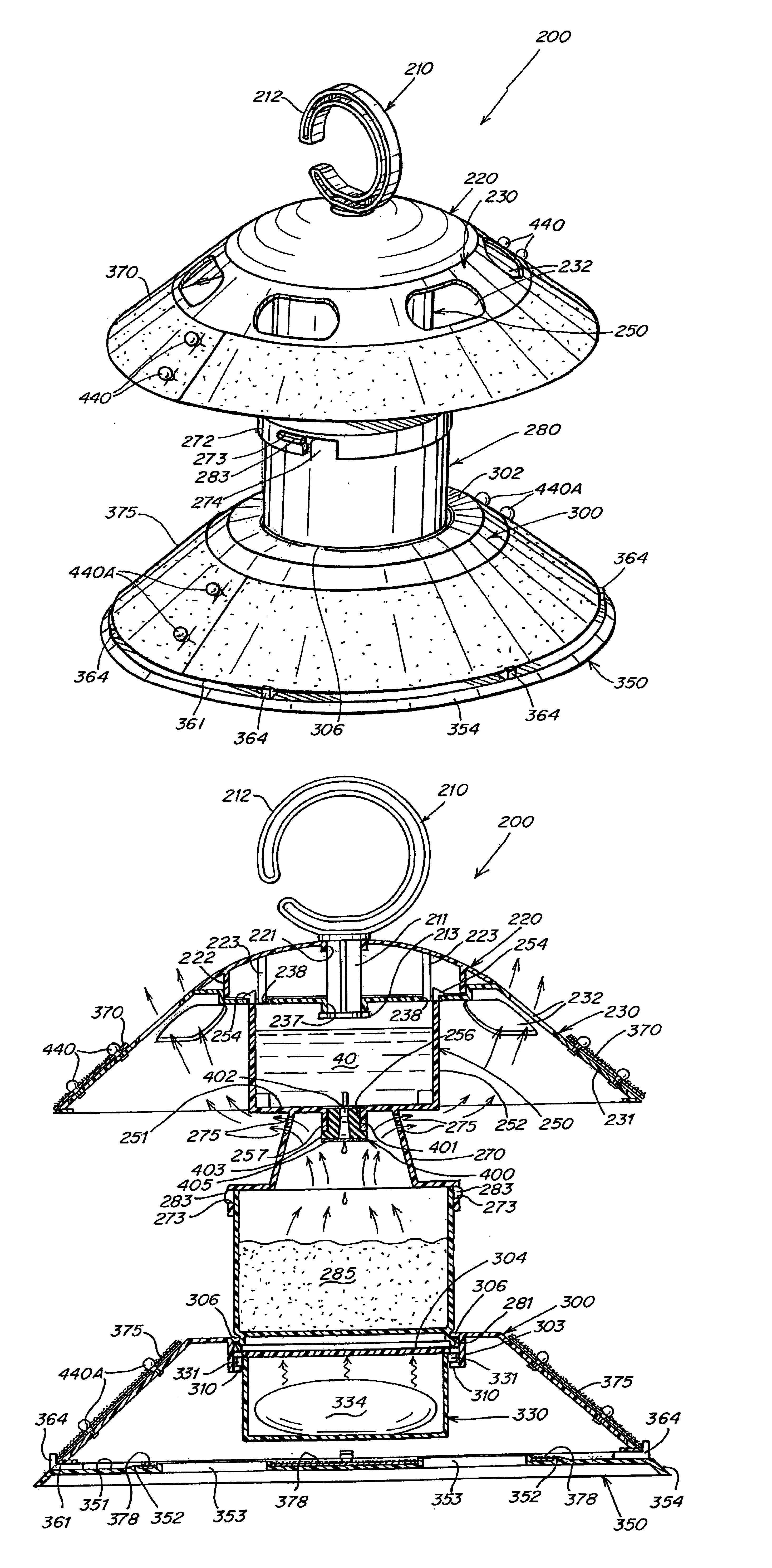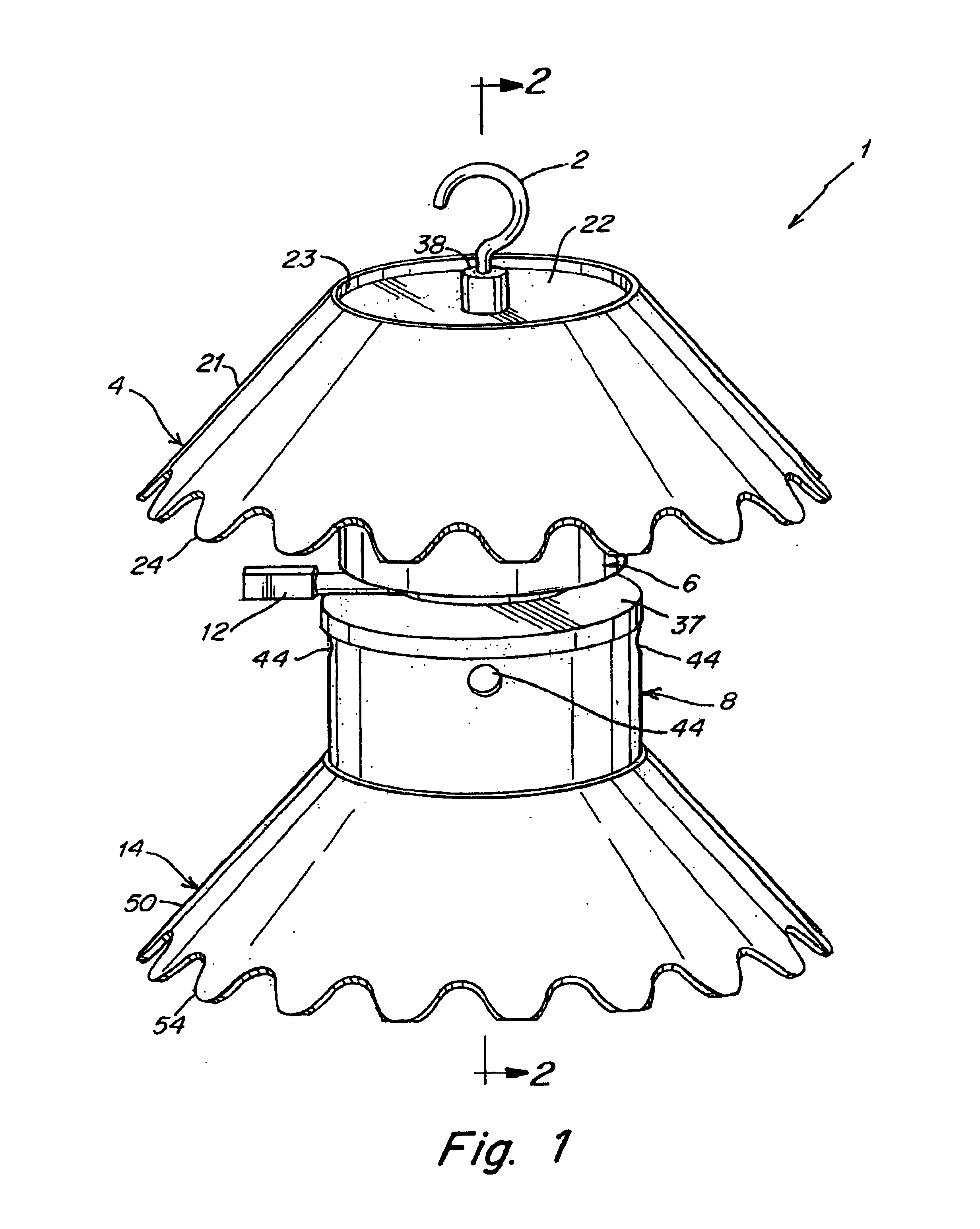Insect/arthropod trap
a technology of insects and arthropods, applied in the field of insects/arthropod traps, can solve the problems of long-term and significant impairment, many of these methods are impractical, and the victims' death, and achieve the effects of slow rate, easy shippability, and slow ra
- Summary
- Abstract
- Description
- Claims
- Application Information
AI Technical Summary
Benefits of technology
Problems solved by technology
Method used
Image
Examples
example 1
[0040]500 ml of H2O is wicked at a rate of 2 ml / hr from a lower container to a chamber above containing 180 g lactic acid C3H6O3. 453 g sodium bicarbonate CHNaO3. 80 g urea, H2NCONH2. The subsequent release of carbon dioxide CO2 are 3×-10× the minimal detection threshold for mosquitoes for 7 days.
example 2
[0041]500 ml of H2O is drip wicked by a conveyor at a rate of 2 ml / hr from an upper container to a chamber below containing 180 g C3H6O3, 453 g sodium bicarbonate CHNaO3, 80 g urea H2NCONH2. The subsequent release of CO2 and NH3 are 10× the minimal detection threshold for mosquitoes for 7 days.
example 3
[0042]500 ml of H2O is dripped through a valve at a rate of 2 ml / hr from an upper container to a chamber below containing 180 g C3H6O3, 453 g sodium bicarbonate CHNaO3, 80 g urea H2NCONH2. The subsequent release of CO2 are 3×-10× the minimal detection threshold for mosquitoes for 7 days.
PUM
 Login to View More
Login to View More Abstract
Description
Claims
Application Information
 Login to View More
Login to View More - R&D
- Intellectual Property
- Life Sciences
- Materials
- Tech Scout
- Unparalleled Data Quality
- Higher Quality Content
- 60% Fewer Hallucinations
Browse by: Latest US Patents, China's latest patents, Technical Efficacy Thesaurus, Application Domain, Technology Topic, Popular Technical Reports.
© 2025 PatSnap. All rights reserved.Legal|Privacy policy|Modern Slavery Act Transparency Statement|Sitemap|About US| Contact US: help@patsnap.com



